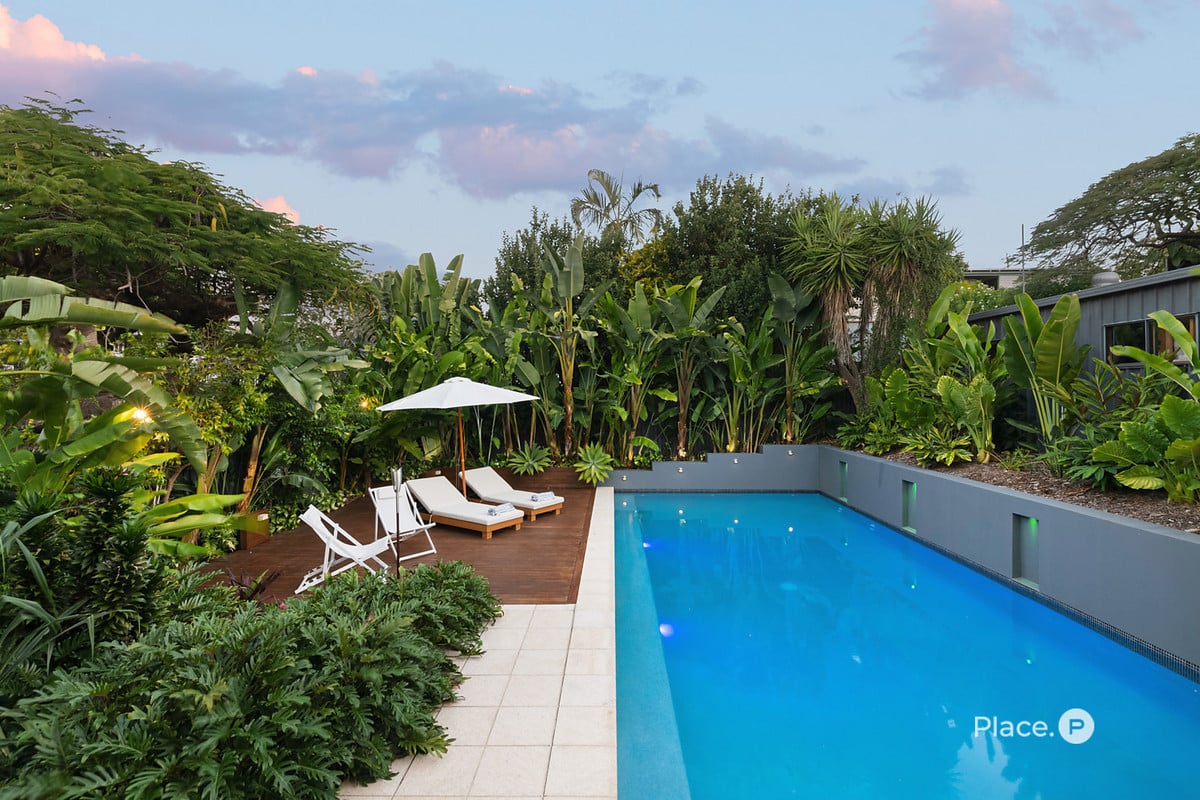As the temperature drops and winter fully sets in, you might not be rushing to do laps in your swimming pool. Now is the perfect time to tick off a few important jobs and get your pool looking its best for the warmer months. We’ve gathered some need-to-know tips to make your outdoor area one you’ll want to show off next summer…
Keep up a regular cleaning routine
Perhaps one of the easiest and most crucial tasks to complete is maintaining the cleanliness of your swimming pool. During the cooler months, heavy gusts of wind can cause foliage and garden matter to fall into the water. Much like in summer and spring, keep up your general cleaning routine by using a pool scoop to remove any nasties and check that your robot cleaner is still working in fine form, if applicable. It’s also smart to clean your swimming pool’s skimmer baskets and filter to remove any hardened grease or oil deposits, ensuring proper filtration. Lastly, brush the pool’s walls to avoid any algae growth and roll out your pool cover, if you have one, to save the water from any debris.

Test the water’s balance
While your swimming pool isn’t getting as much use, make time to check the pH level of its water – this should be between 7.2 and 7.6. To guarantee the best results, take a water sample from below elbow-deep, discuss your findings with your preferred pool specialist and use the appropriate treatment. Water testing kits are available at a range of stores, including pool equipment, hardware and even some grocery shops. It’s advised that you conduct testing once every two to three weeks during the cooler months.
Check chlorine levels
First-time pool-owners, you’d be forgiven for thinking that testing the water’s pH balance is the same as checking its chlorine levels. However, this is another task altogether that is definitely worth adding to the list. In winter, lower temperatures can significantly decrease your swimming pool’s chlorine demand and lead to excessive chlorine levels if not monitored. To avoid potential damage to pool equipment, aim to keep the water’s free available chlorine at a constant level of two to three PPM (parts per million) during this time of year. Once again, your preferred pool specialist will sell a testing kit and advise on any recommended treatments; many chlorine and pH level testing kits are available together for convenience. Final tip? If you’re using a salt chlorinator and a pool cover, keep the chlorinator to one to two PPM as covers can trap chemicals and chlorine.

‘Shock’ your pool
‘Shocking’ your swimming pool is a process that removes any undesirable elements from the water – think sweat, bird droppings and cosmetics. Adding the right amount of chlorine or non-chlorine pool chemicals will destroy ammonia and nitrogen compounds by oxidation, allowing your pool’s sanitiser to focus on eliminating bacteria and algae. Enquire with your preferred pool specialist to get your swimming pool in peak form when the heat and humidity returns.
Set your pool tech to ‘winter mode’
If your swimming pool is solar-heated and doesn’t have an automatic controller, don’t forget to change the heater’s settings to ‘winter mode’ to save on electricity costs and prevent water stagnation. This handy option powers the circulating pump to flush water through the solar collector and pipes, maximising its longevity. You can also reduce the running times of your filter to operate for three to four hours each day, helping to ease running costs while your pool is being used less.
For more ideas and to keep up-to-date with all things Brisbane real estate, subscribe to the newsletter below.

